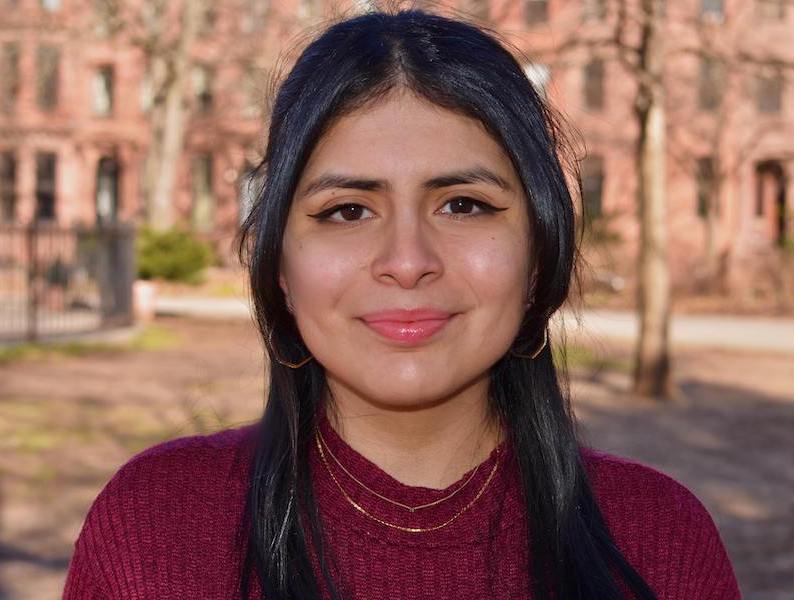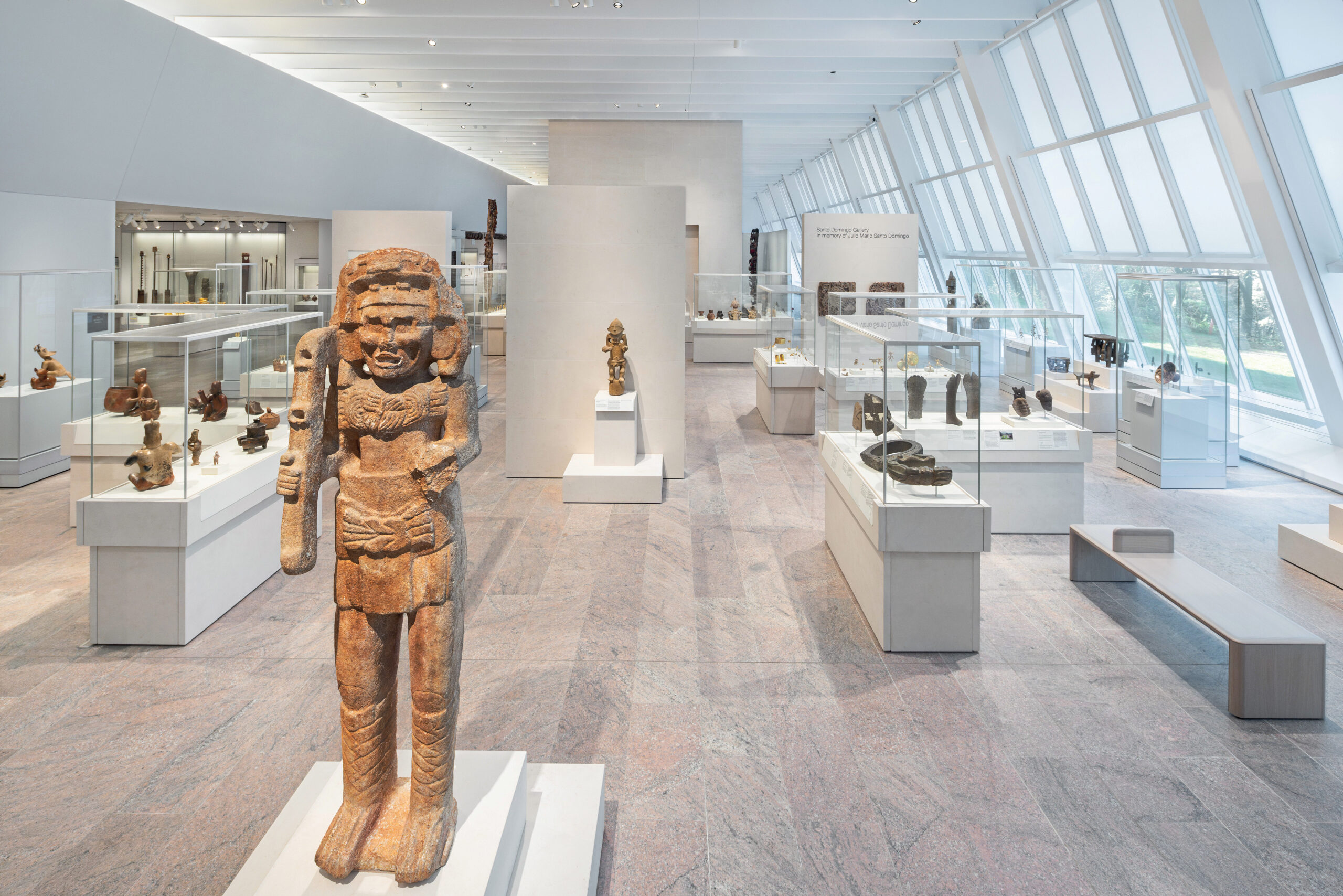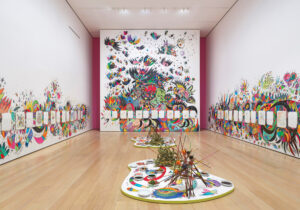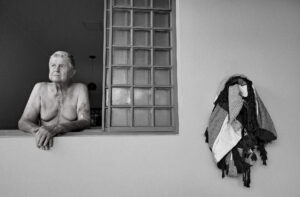This article is adapted from AQ’s special report on COP 30
After four years of renovations, the Metropolitan Museum of Art’s Michael C. Rockefeller Wing reopened to the public on May 31. The occasion marked a refashioning of how one of the world’s leading museums presents the art of Indigenous cultures of the Americas, at a time when legacy institutions are grappling with what it means to decolonize their collections.
Almost 700 objects—crafted in ceramic, gold, wood and stone—fill the Arts of the Ancient Americas galleries. From Maya sculptures to Andean textiles and gold ornaments from Colombia and Panama, the collection reveals the sophistication of societies that flourished long before European colonization. They also reflect a more profound shift: a deliberate move toward centering Indigenous agency.
“Despite European domination, Indigenous agency and resilience are evident in the visual arts,” reads a wall text near the entrance. The design and curation reflect that statement, portraying these artists and communities as innovators.
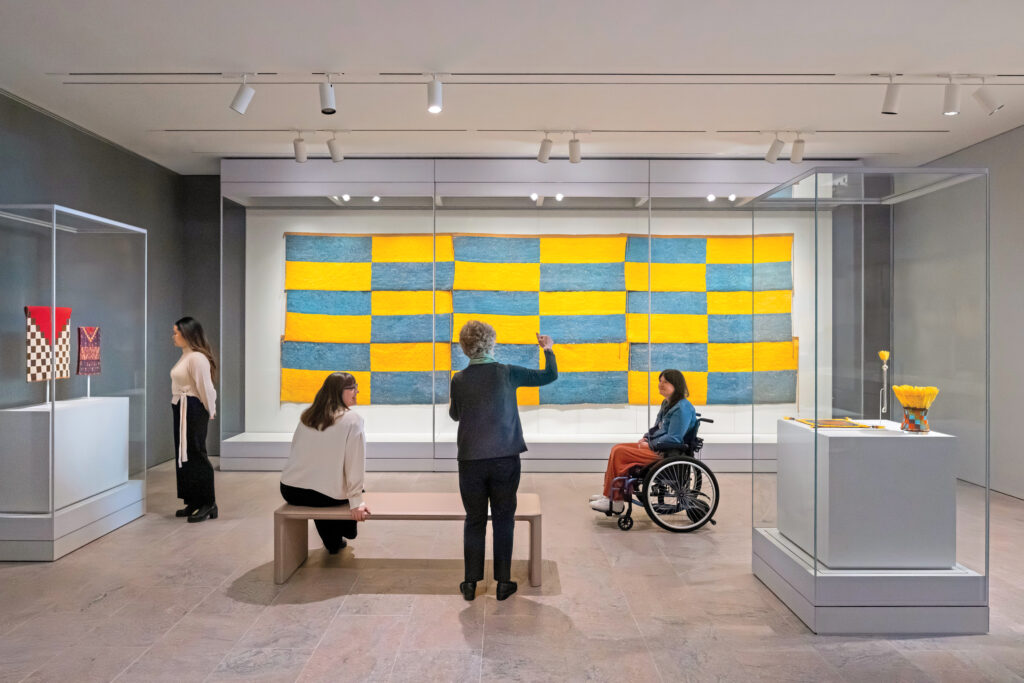
One of the highlights of the revamped wing is a new space devoted to ancient American textiles and featherwork. (Courtesy of The Metropolitan Museum of Art)
Recent discoveries offer fresh insights into gender roles and daily life. In Peru’s Moche culture, elite women wore elaborate regalia to signal power—a fact revealed through new archaeological findings. One exquisite nose ornament was detailed using electrochemical silvering—a technique not seen in Europe until centuries later.
The galleries also exhibit items like tupus and ttipquis, pins Andean women used to fasten and decorate clothes since at least the early first millennium CE. Women continued wearing them during the colonial era, incorporating new materials like glass. These daily artifacts offer a window into how these women merged self-expression and practicality.
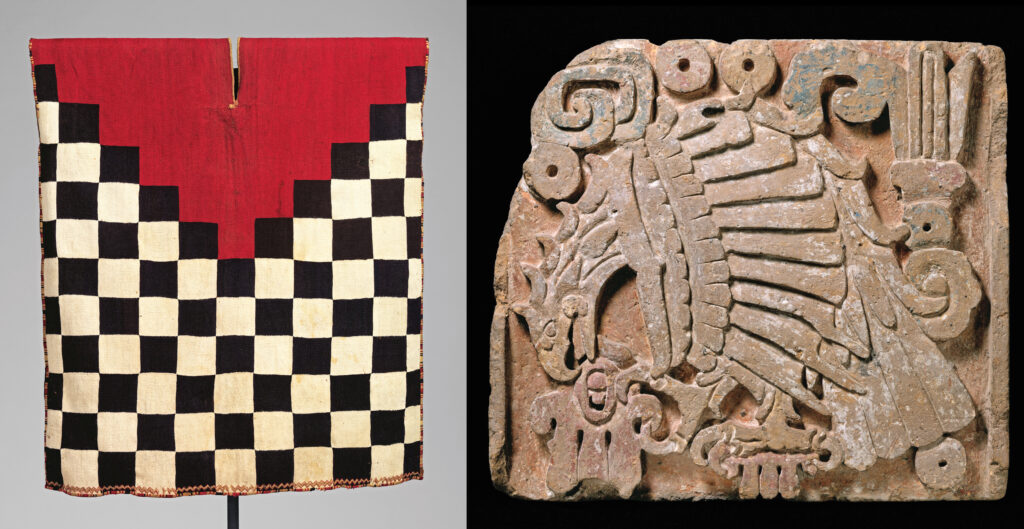
A tunic by Inca artists, from Argentina, Peru or Bolivia (1400–1535 CE) (left) and
An eagle relief, by Toltec artists, Mexico (900–1200 CE) (Courtesy of The Metropolitan Museum of Art)
Thanks to recent scholarly advances, some of the works on display now bear the names of their creators. Advances in epigraphy and the study of Classic Maya period texts have enabled scholars to identify artists. A carved limestone panel on display is now attributed to the sculptor Chakalte’, for example.
The renovated galleries also highlight the use of gold in Indigenous cultures. Many used gold to signal status, sharing metalworking techniques across regions. In Colombia’s Calima region, gold regalia adorned elite leaders called caciques. In Panama, gold plaques with imagery were found in high-status burials, worn by the dead.
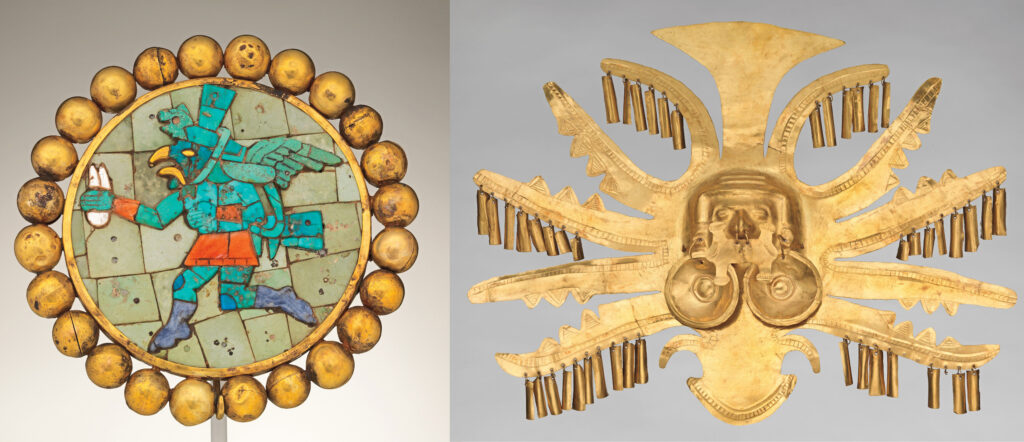
Headdress and nose ornaments, by Calima (Yotoco) artists, Colombia (100–700 BCE) (Courtesy of The Metropolitan Museum of Art)
Although the galleries emphasize Indigenous agency, it’s clear that some precolonial art forms survived under colonial rule only when they aligned with Spanish interests. Items like vessels and ornaments signaled Inca identities as both Christians and subjects of the Spanish crown. As one wall text notes, Indigenous artists have navigated history by “at times resisting and at times adapting to shifting global currents.”
One lingering question remains: How might these cultures have evolved artistically without the disruption of colonization?
Whether this reimagining will resonate with a new generation remains to be seen. What lies front and center, however, is that the works by these Indigenous artists are mesmerizing and regal. The Met’s Arts of the Ancient Americas galleries present them as reflections of vibrant, complex civilizations.


